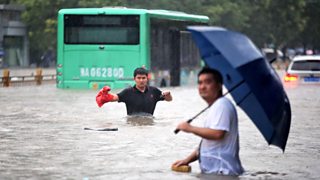What are the causes of the heatwave in India?
Earlier and intense heat, combined with a lack of rainfall, is having a devastating impact across regions in India and Pakistan, causing temperatures as high as 50 degrees Celsius.
India's weather department has issued a severe heatwave warning as temperatures soar. While heatwaves are common in India, especially in May and June, summer began early this year with high temperatures from March itself - average maximum temperatures in the month were the highest in 122 years. While summer temperatures have always been high in many Indian states, experts say India is now recording more intense, frequent heatwaves that are also longer in duration.
Temperatures over 40 degrees Celsius (and in some places approaching 50 degrees) are making it almost impossible for 1.4 billion people to work. It鈥檚 damaging crops and making for dangerous conditions for the millions of people who work outside. Vimal Mishra, who studies the effects of climate at the Indian Institute of Technology in Gandhinagar outlines what he believes to be the causes of the unprecedented heatwave. He says that this year, the high temperatures are being seen in more regions than normal, and for longer, and that 'dry heat' affects how long a person can be outside, and their ability to work. The heat has also affected the crops, due in part to the timing of the heatwave, and there are reports of as much as a 40 per cent decline in yields. He believes that a driver in this year's heatwaves has been a lack of winter and spring rain, as rain can help bring temperatures down, and persistent high pressure. His research has shown that global warming is a cause of this intense heat.
Photo: An older woman cools herself with water in Kolkata, India. Credit: Getty Images
Duration:
This clip is from
Featured in...
![]()
Extreme weather: A global record—成人快手 World Service special collections
Floods and wildfires are increasing in both frequency and intensity. What lies ahead?
More clips from Science In Action
-
![]()
How do chimps learn their skills?
Duration: 15:25
-
![]()
Pompeii: DNA reveals truths about victims' identities
Duration: 04:44
-
![]()
Libanoculex Intermedius—Can carbon capture live up to its hype?
Duration: 00:52
-
![]()
How 'viral sex' in bats can create new hybrid Sars viruses
Duration: 06:05







